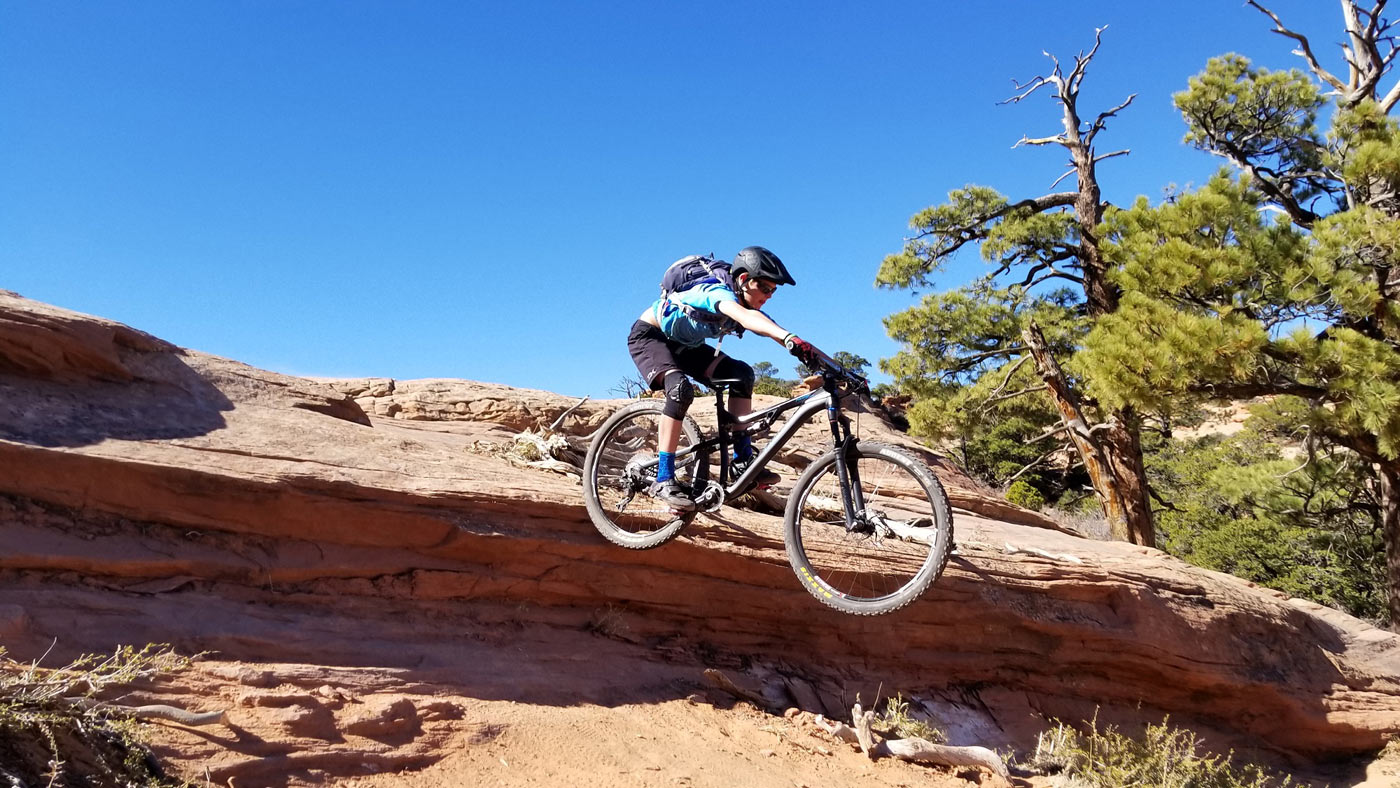Like so many great companies, Trailcraft Cycles was built out of a desire for something better for themselves. Having just ordered a second one for my own daughter, and being an avid entrepreneur myself, I wanted to know more about their story. Founded in 2014 and launched through Kickstarter, the brand has gone from a single 24″ hardtail to launching a complete line of premium youth mountain bikes including 24″, 26″ and 27.5″ hardtails and full suspension mountain bikes, as well as select kid-sized components and wheels. Their growth has been substantial enough to justify founder Ginger Rosenbauer’s husband, Brett, to leave his job at Niner Bikes to join the company full time. Here’s how they’re doing it…
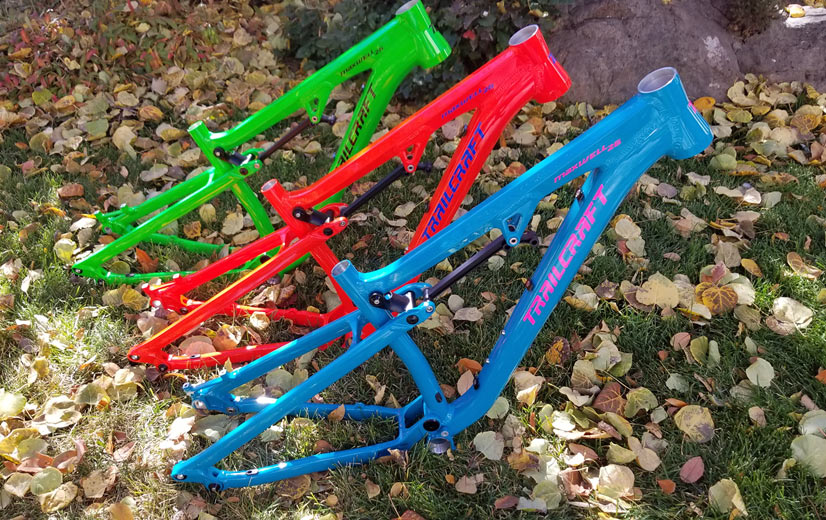
Bikerumor: What was the impetus to start Trailcraft Cycles?
Ginger: It really started off with our then 7 year old son, modifying his stock 24” bike and the frustration of putting a 45 pound kid on a 27 pound 24” hardtail. Our son was like a duck to water at 2 years old on the bike, pedaling before his 3rd birthday. We bought him a Yamaha PW-50 dirt bike for his 3rd birthday. He naturally developed really good riding skills from that little dirt bike. Accelerated hand/eye coordination of going fast, picking lines, etc. from an early age – kind of like kids on BMX bikes super young. Our son really started to enjoy riding mountain bikes as he got onto the 24” wheel size. The 24” size is the wheel size where kids can really actually ride with you and keep up.
Back in 2010-2011 everything in the 24” wheel size off the shelf was long, heavy, and required heavy modification for a 45 pound kid to pedal uphill. We were modifying a Scott Scale Jr. which was 28 pounds but the bike was built around 420mm chainstay lengths (ours is 390mm) and still had the mount for a kickstand welded on! Our son’s skills were really developed, but that heavy bike with really poor geometry was holding him back. So we set out to build our own bike for him, this was the start of our first model the Pineridge 24, and the start of Trailcraft Cycles.
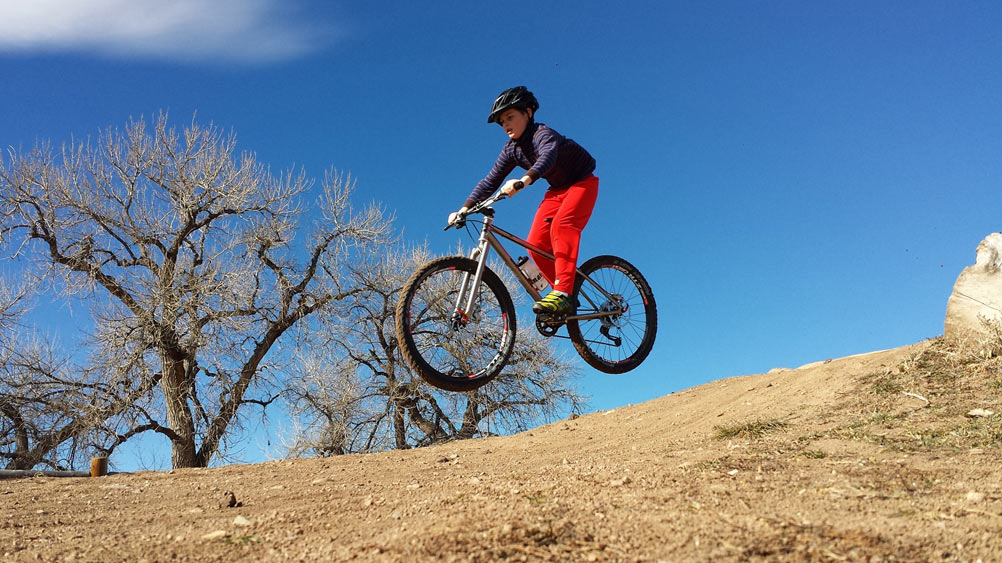
BIKERUMOR: How’d you get the first prototypes built?
Brett: We had a drawing and initially thought about going with a local US aluminum or titanium frame builder for prototype samples, but it was cost prohibitive and lead times were SUPER long. Our plan was always to manufacture in Asia, partly because that’s where my experience was from with Niner and before that Ultimate Support Systems (now Feedback Sports). Titanium was an easy way for us to get prototypes very quickly – we went from final drawings to our first ridable sample in under eight weeks.
Bikerumor: What are some of the key differences between a Trailcraft and youth mountain bikes from some of the major bike brands?
Ginger: Wow, where to start! First, when you contact Trailcraft Cycles, you will be talking directly with Brett or me every time. We really enjoying visiting with the families and getting to know them, and are very passionate about helping other families have positive riding experiences on the trails. These calls help us determine what our customers are looking for and to recommend the best bikes based on their local riding terrain and their child’s direct riding needs. This personalized shopping experience combined with our exemplary customer service helps us provide the special Trailcraft touch!
Our kids, Elijah (13) and Evalina (10) have let us know what works, what doesn’t, and we’ve directly made spec decisions to our bikes as a result. One super small detail which is overlooked by pretty much everyone is our spec’ing of a 11-42 cassette on the bike – across our entire model range. From a major brand perspective, this cassette adds probably just $10.00 to the bill of materials (BOM) so this is why you continue to see 11-36 cassettes spec’d. Those dollars count when you are big and have a retail price/margin requirement to hit. Most of our other components would make product managers at major brands cringe, but we are small, nimble, and have super low overhead with no shareholders to keep happy.

Frame geometry, premium component spec with 5 different purchase options and price points, and at least three frame color choices for each model also set us apart. Each Trailcraft model tends to be at least 4-5 pounds lighter than the typical major bike brand offering. 5 pounds is a huge amount of weight when you are, let’s say, a 50 pound kid. Our bike models can also be purchased 5 different ways, and in several cool color options. Your major brand will have one model, in one color, and at one price point which appeals to the mass market. At Trailcraft you can buy an XT, Deore, or “Special Build” level complete bike – as well as rolling frameset and frame-only option from us. We assemble all bikes in Fort Collins, Colorado with premium level components with many more small attention to detail items which make a big difference when you are a young rider. As an example, we have our own direct mount cranks with light alloy spindle and parents can choose a 26, 28, 30, or 32 narrow-wide style chainring depending on local terrain.

Bikerumor: You’ve updated the frames and added new models very quickly for a young brand, what led to the geometry and spec changes on the original Pineridge?
Ginger: The Pineridge 24 received some frame modifications in the late 2017 revision. We introduced our Timber 26 model which used a hydroformed down tube and 44mm head tube, we carried this down to the Pineridge 24 as well. The frame is a bit lighter, uses a 44mm inset headset to reduce more weight as well as stack height, and we added a few cool new colors as well as a couple limited edition colors.
We also had some pretty important spec changes from our original Pineridge 24 (original Pineridge 24 reviewed here) as technology is always changing:
- Stan’s NoTubes introduction of Crest MK3 rims. Wider rim, lighter weight, moved to 24 spoke rims. Sub-1300 gram wheel weight.
- All bikes moved to 1x drivetrain. Customers were overwhelmingly wanting to simplify the shifting and reduce more weight. At this same time, Sunrace introduced the 11-42 cassette further expanding gearing options which our own kids were testing at the time on their personal bikes.
- Introduction of our own Trailcraft Direct Mount Cranks with aluminum spindle with 26, 28, 30, or 32 tooth narrow-wide style chainrings. Chainring size can be configured for your local riding terrain for the Pineridge 24, as well as ALL of our models.
- Introduction of three different complete bike build options, a “rolling frameset” option (frame, fork, wheelset, crankset) and frame-only option at different price points and many cool color choices.
All of these changes have allowed us to get the Pineridge 24 down to just over 21 pounds. XT level builds are coming in under 21 pounds when set up tubeless! We publish the real weights on our website for each model, too.
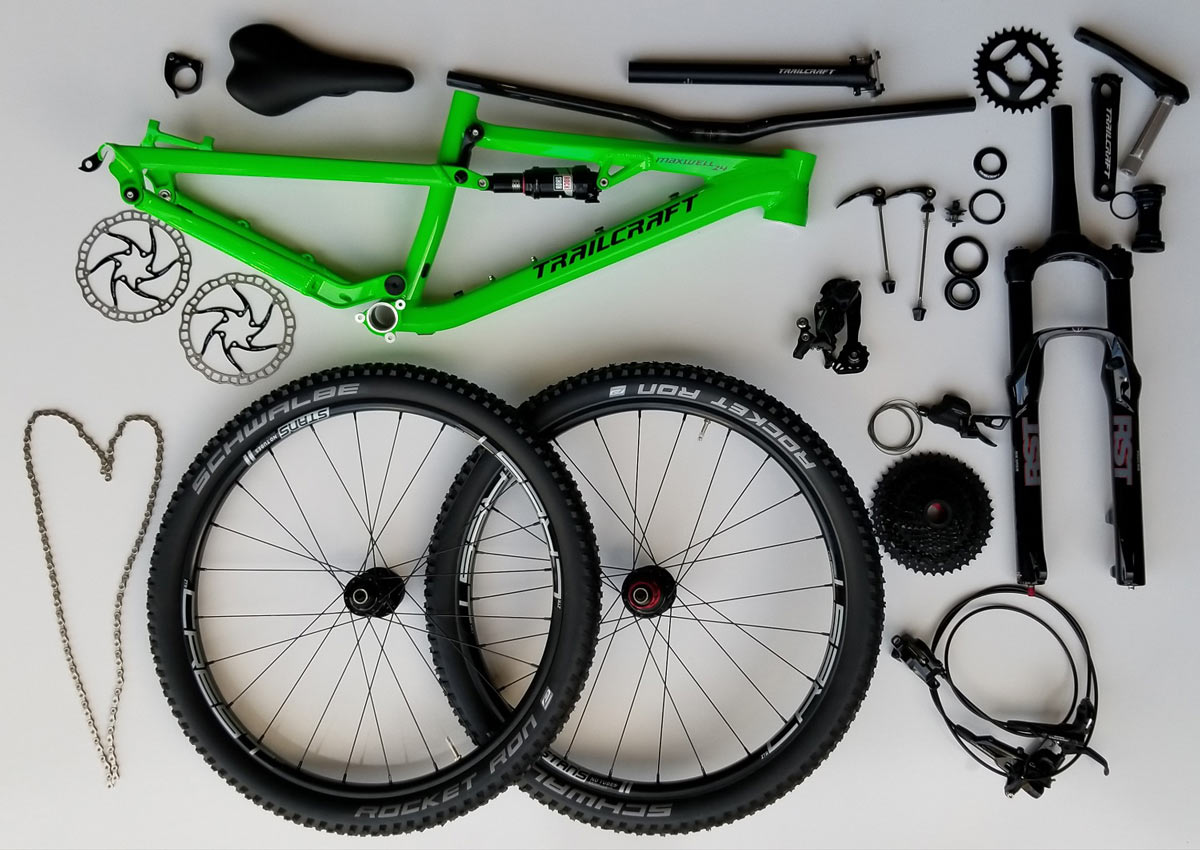 Bikerumor: How did you pick the types and sizes of bikes to add to your line? How do you develop “kid” geometry?
Bikerumor: How did you pick the types and sizes of bikes to add to your line? How do you develop “kid” geometry?
Ginger: Honestly the line has grown as our own kids have grown. As all kids grow, we looked at what bike we wanted to put our own son on coming off 24” and onto the next size. Looking at the market, we noticed a HUGE gap between 24 and 27.5. Now this was right about the time when most of the big companies completely missed the 29″ size way back in 2005-2010 (Giant and Specialized namely) so they went “all in” on 27.5″ but most of what they made didn’t fit kids just coming off of the 24“ wheel size, like our son was ready for next.
There was this big market gap, so we saw a huge and easy opportunity to fill. Our Timber 26 as an example weighs under 22 pounds and is the perfect bike for kids coming off the 24″ wheelsize. This bike is very light weight and with proper sized wheels with a much more manageable wheelbase compared to inherently longer 27.5 or even 29 wheel bike in the 27+ pound range. A lot of parents feel kids will “just grow into it” which we feel is the wrong approach to take. Why give your kids a bike that is too big where they lose the skills and confidence learned on their 24” on a bike that is still just too big.
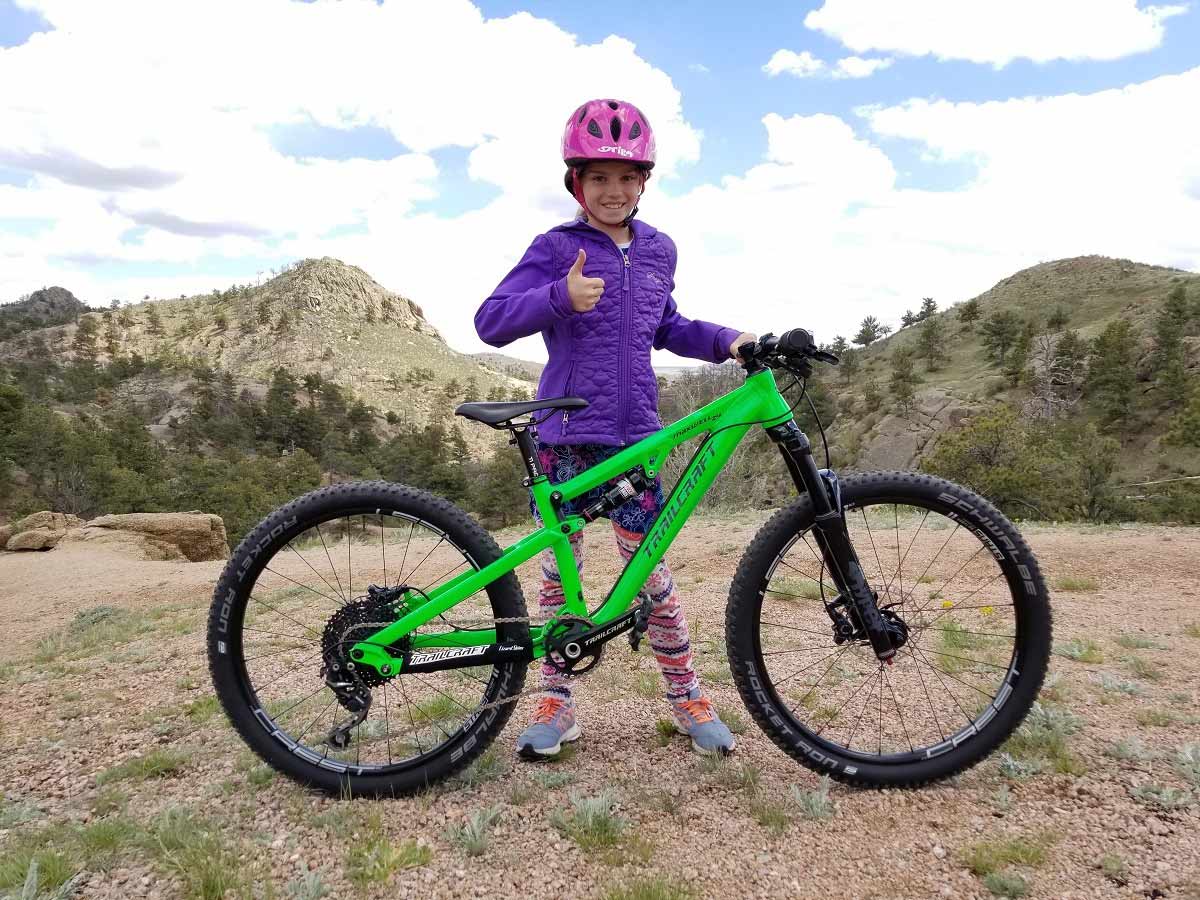
We are also very fortunate to live in a really terrain-diverse area, with a lot of really cool kids of all types of riding abilities and disciplines. Our own kids have a lot of influence on our bike models, but also the terrain and elevation gains of each ride kind of dictate the necessity for higher quality, lightweight bikes. Take our new Maxwell 24 full suspension trail bike as an example. This bike needed to be light and able to be pedaled uphill, as well as be able to rip enduro style riding at Steamboat Bike Park one day, then ride Emerald Mountain across the valley the next day which involves climbing.
A lot of the world has similar terrain and the families buying our bikes said they wanted and would appreciate a high quality, lightweight bike they don’t have to modify to make lighter. Kid geometry for us is a balance of playful yet stable at speed. We do like the stable up front and party in the back designs, but at some point you get the “pinball” effect of chainstays which are too short and can’t keep up with the too long front ends. Our bikes are a nice blend of both, and can easily hit the park one day and ride Mag 7 in Moab the next day and ride all the way back to town without being 29+ pounds and all slacked out – which seems to be the current trend in kids full suspension bikes.
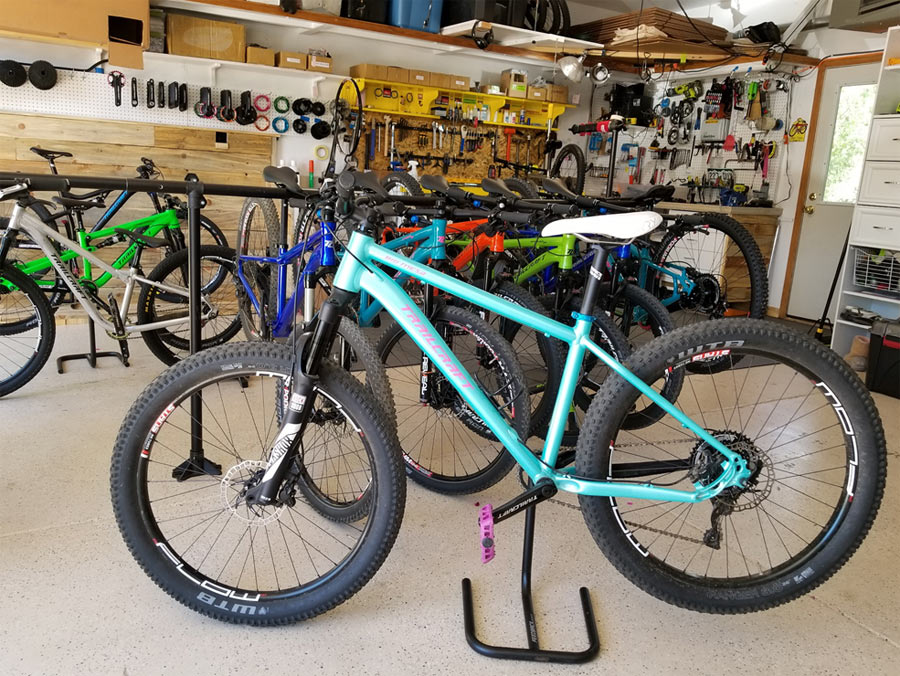
Bikerumor: Are kids really into the “plus” tire thing?
Ginger: Some parents are looking for the added traction and stability of the bigger tires for their kids. For the high air volume purists out there, these bikes ride really well. Biggest disadvantage so far though has been super heavy rotational weight making kids bikes heavier. We feel “plus” needs to be done right with high quality wheels and lightweight folding tires. A 24×2.8” wire bead tire at 800+ grams with super wide and heavy 32 straight-gauge spoke rims doesn’t set young kids up for a positive riding experience when they’ve burned all their matches just a mile from the beginning of the trailhead. We are exploring “plus” in smaller wheel sizes, and our goal will always have a focus on light weight.
We just introduced a super cool 26+ bike called the Big Mesa in XS and S sizes last month which has a special appeal to new riders to the sport – both kids, teens, as well as shorter adults. These lighter weight plus tires give added traction and stability which can really increase the confidence of timid riders or those that enjoy the feel of extra stability on the trail. Plus tires under the right rider are an instant confidence booster!
The Big Mesa was built “Trailcraft” style – so about a 24 pound complete bike weight. Most bikes in this category are 4-5 pounds heavier. I’ve been riding our Big Mesa for almost a year now and really love this bike! Cornering on loose terrain is easier, and riding long rock gardens much less daunting, not to mention the extra boost of confidence when trying something new. Which usually happens riding behind Elijah!
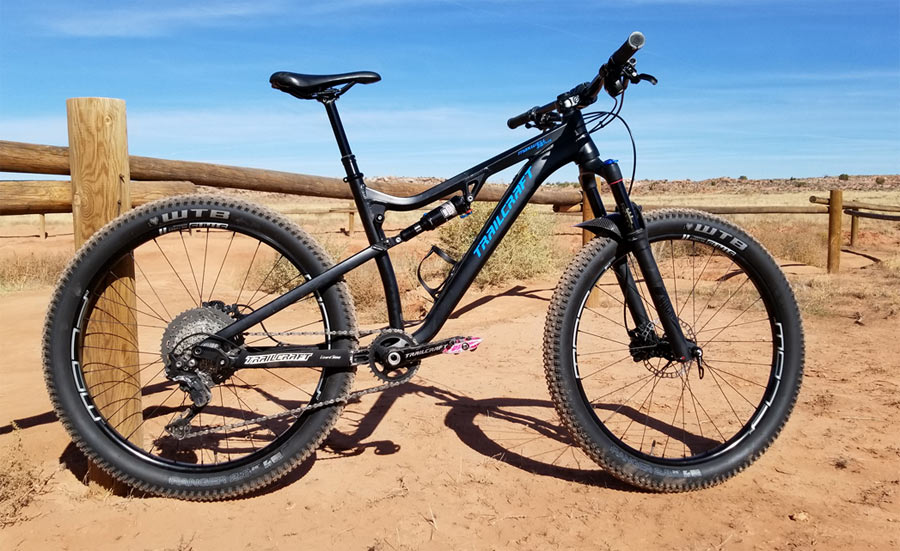
We also have our Maxwell 26+ full suspension bike coming out in the spring which can take a 26+ or 27.5 wheel size just like our current Big Mesa. So just like 27.5+/29” adult bikes, we have models which can take both 26+ and 27.5 depending on your terrain and mood of the day. It’s a good time to be a 4’9” to about 5’6” rider wanting “plus” without the “plus weight” with lightweight bike options available today.
Bikerumor: Are you selling very many of the titanium Pineridge models? And how do you answer parents’ concerns about spending $1,500 or more on a kid’s bike?
Brett: We sell about four of those per year. It’s our halo product, and the people that buy them have no problem buying a $5,000 tricked out kids mountain bike. We keep a couple on hand, though!
As for the cost, if you’ve got a kid that’s really into the sport, putting them on a bike that’s 20% to 25% lighter than what they’ve been riding, the difference is amazing. It’s like any sport that requires equipment, the initial investment is high, but if they’re enjoying it and really using it, they’re going to learn skills early on that’ll take them to the next level and help them advance so much faster.
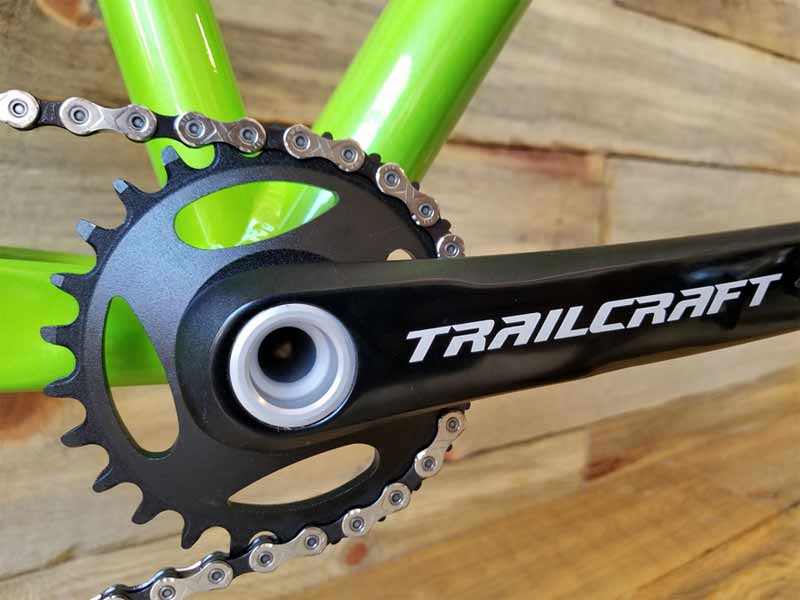
Bikerumor: And, you know, some of us spend $3,000 on a wheelset…
Brett: Yes, we see and hear just about everything. Guys with $8,000+ trail bikes and they balk at spending $1,800.00 on their own kid’s bike that they will get a solid 2-3 seasons on. It all depends on the family and their involvement in the sport, and really your kid’s interest level in mountain biking. If your child can pick out the color and be involved in the build and parts, they’re going to be more emotionally invested in the bike, too. It’s a bike that they’ll ride for three years or so in each size we offer, and it can be passed down to siblings. Some families really are into riding and want the best for their kids. Some families are fine with dusting off their wife’s old Giant Trance 26″ with 170mm cranks. That’s fine too. Our focus is offering high performance bikes with proper kid sized components which will make your kid a better rider. For everyone wanting to modify a bike they might already have, we sell proper sized and light cranks, wheels, saddles, grips, etc. which not only help make them better riders but also reduce bike weight.
Bikerumor: Ginger, you started the company, and now Brett jumped ship from Niner to work with you full time on Trailcraft, so it must be growing?
Ginger: Yes, Brett left Niner this past April after 10+ years. He was very fortunate to work with some really great people at Niner and involved from the very first prototypes and company launch all the way to company relocation from California to Colorado. We joke he went from Niner as a startup to “coming home” to take Trailcraft as a startup to the next level. We are excited to be doing this together and putting all our energy and time into Trailcraft. He has 20 years of experience in the bike industry, and knows the time requirement and the long startup hours so we are in good hands!
We are doing well and growing – we have a super lean business model with very low overhead. We don’t bring in “complete bikes in boxes ” like the majority of our competition does. This also allows a lot more flexibility and gives us the opportunity to do more custom builds and several build options for each model. If something new comes out like a new fork, or new brakes, etc. we can move quickly and adjust our bike offerings almost immediately and are not stuck with dead or old inventory.
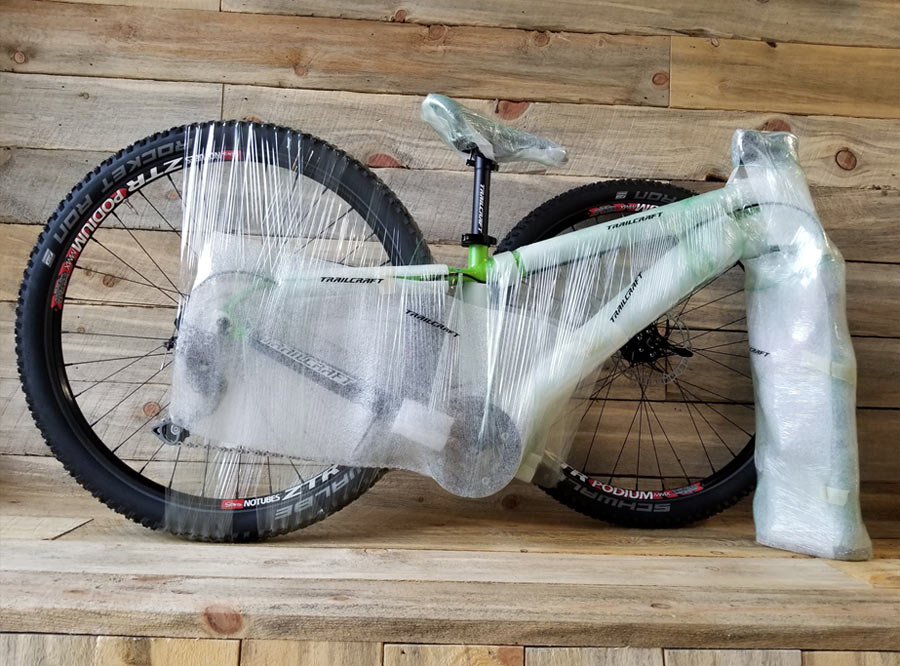
We’ve also got full quality control of assembling each bike in-house so there are never any surprises once the bike arrives to you guys – the riders. Our bikes are expensive, but we focus on making category leading bikes at category leading weights with nothing needed to modify to make them lighter or perform better. We’ve done it all for you, right from the beginning. We are very (very) busy parents just like those probably reading this, and many families appreciate a high quality product built right so you can spend more quality time riding and not trying to figure out how to make a less expensive bike 4-5 pounds lighter or ride better. This translates to a very positive experience which does accelerate young riders to next level quicker by riding a high performance mountain bike.
